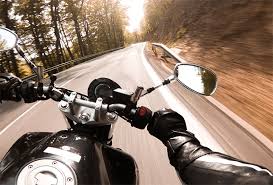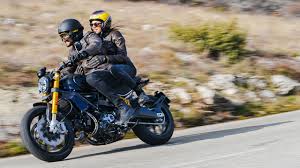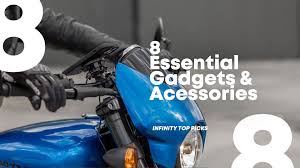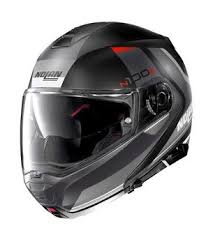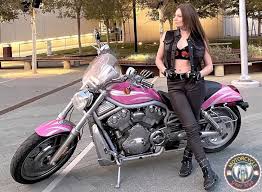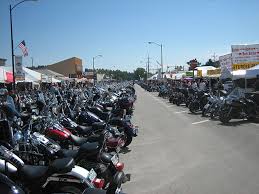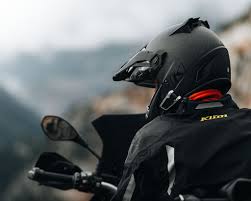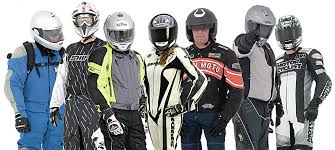Essential Guide to Quality Biker Riding Gear for Ultimate Safety and Comfort
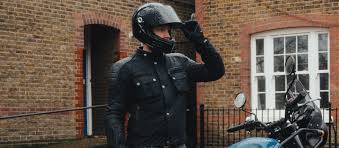
The Ultimate Guide to Biker Riding Gear
When it comes to motorcycling, having the right riding gear is essential for both safety and comfort. Whether you’re a seasoned rider or just starting out, investing in quality biker riding gear can make all the difference in your riding experience.
Helmet
One of the most important pieces of riding gear is the helmet. A good helmet not only protects your head in case of an accident but also shields you from wind, debris, and noise while riding. Make sure to choose a helmet that fits snugly and meets safety standards.
Jacket
A sturdy motorcycle jacket provides protection against abrasions and impacts in case of a fall. Look for jackets made from durable materials like leather or textile with built-in armour for added safety. Additionally, many jackets come with ventilation options for comfort in different weather conditions.
Gloves
Protecting your hands is crucial while riding. Gloves not only provide grip and control but also shield your hands from wind, debris, and potential injuries in case of a fall. Choose gloves that fit well and offer adequate protection for your riding style.
Trousers
Riding trousers are designed to provide protection for your lower body in case of a slide or impact. Look for trousers made from abrasion-resistant materials with armour at the knees and hips for added safety. Some trousers also come with waterproofing or thermal lining for versatility in different weather conditions.
Boots
Proper footwear is essential for stability and protection while riding. Motorcycle boots offer ankle support, impact protection, and grip on slippery surfaces. Look for boots that are comfortable for long rides and provide adequate protection for your feet and ankles.
Investing in quality biker riding gear is not just about style – it’s about safety and comfort on the road. By choosing the right helmet, jacket, gloves, trousers, and boots, you can enjoy your rides with peace of mind knowing that you are well-protected against potential hazards.
7 Advantages of Biker Riding Gear: Safety, Comfort, and Style on the Road
- Enhances safety by providing protection in case of accidents or falls.
- Offers comfort and support during long rides, reducing fatigue and strain.
- Protects against weather elements such as wind, rain, and extreme temperatures.
- Improves visibility with reflective materials for increased road safety.
- Increases confidence while riding knowing you are well-equipped for any situation.
- Enhances style and aesthetics, allowing riders to express their personality.
- Helps maintain focus on the road by minimizing distractions and discomfort.
Challenges of Biker Riding Gear: Expense, Upkeep, and Sizing
Enhances safety by providing protection in case of accidents or falls.
Biker riding gear plays a crucial role in enhancing safety on the road by providing essential protection in case of accidents or falls. Helmets, jackets, gloves, trousers, and boots are designed with durable materials and built-in armour to shield riders from impacts and abrasions. By investing in quality riding gear, motorcyclists can significantly reduce the risk of injuries and ride with confidence, knowing that they have an added layer of protection in unforeseen circumstances.
Offers comfort and support during long rides, reducing fatigue and strain.
Biker riding gear offers unparalleled comfort and support during long rides, effectively reducing fatigue and strain on the rider. With features like ergonomic design, breathable materials, and strategic padding, quality riding gear ensures that riders can maintain optimal comfort levels even during extended journeys. By providing the necessary support for the body’s key areas and reducing the impact of vibrations and road conditions, biker riding gear allows riders to focus on enjoying the ride without being hindered by discomfort or fatigue.
Protects against weather elements such as wind, rain, and extreme temperatures.
Biker riding gear offers a crucial advantage by providing protection against various weather elements, including wind, rain, and extreme temperatures. Quality riding gear is designed to shield riders from harsh environmental conditions, ensuring comfort and safety on the road. With features like waterproofing, windproofing, and thermal insulation, biker gear allows riders to stay dry, warm, and comfortable in diverse weather situations. By safeguarding against the elements, biker riding gear enhances the overall riding experience and enables bikers to focus on enjoying the journey without being hindered by weather challenges.
Improves visibility with reflective materials for increased road safety.
Biker riding gear that incorporates reflective materials offers a significant advantage by enhancing visibility on the road, ultimately boosting safety for riders. These reflective elements help increase visibility in low-light conditions or at night, making motorcyclists more noticeable to other road users. By improving visibility, biker riding gear with reflective materials plays a crucial role in reducing the risk of accidents and enhancing overall road safety for riders, highlighting the importance of incorporating such features into motorcycle apparel.
Increases confidence while riding knowing you are well-equipped for any situation.
Having the right biker riding gear increases confidence while riding, as it assures riders that they are well-equipped to handle any situation that may arise on the road. Knowing that you are protected by quality gear such as a helmet, jacket, gloves, trousers, and boots instills a sense of security and readiness for whatever challenges the journey may present. This confidence allows riders to focus on enjoying the ride and exploring new adventures without worrying about their safety, ultimately enhancing the overall riding experience.
Enhances style and aesthetics, allowing riders to express their personality.
Biker riding gear not only serves a practical purpose but also enhances style and aesthetics, providing riders with a platform to express their unique personality. From sleek leather jackets to custom-designed helmets, each piece of gear allows riders to showcase their individuality and make a statement on the road. By choosing gear that reflects their personal style, riders can feel confident and empowered while riding, creating a sense of identity and belonging within the vibrant motorcycling community.
Helps maintain focus on the road by minimizing distractions and discomfort.
Quality biker riding gear plays a crucial role in helping riders maintain focus on the road by minimizing distractions and discomfort. By wearing well-fitted helmets, jackets, gloves, trousers, and boots designed for motorcycling, riders can enhance their comfort levels and reduce distractions caused by factors like wind, noise, or discomfort. This allows riders to stay more alert and focused on their surroundings, ultimately enhancing safety on the road. With the right riding gear, bikers can enjoy a smoother and more immersive riding experience while prioritizing their safety and concentration on the journey ahead.
Cost
One notable drawback of biker riding gear is the cost factor. High-quality motorcycle gear, including helmets, jackets, gloves, trousers, and boots, often comes with a hefty price tag. For riders on a budget, this expense can be a significant investment that requires careful consideration. While the cost may deter some riders from purchasing top-of-the-line gear, it’s important to remember that quality riding gear plays a crucial role in ensuring safety and protection on the road. Balancing affordability with the need for reliable gear is a challenge that many riders face when navigating the world of biker riding equipment.
Maintenance
Maintenance can be a significant con when it comes to biker riding gear, especially for items like leather jackets or boots. These pieces often require specialized care and maintenance to preserve their quality, longevity, and performance. Regular cleaning, conditioning, and waterproofing may be necessary to prevent deterioration and maintain the protective properties of the gear. The additional time and effort required for maintenance can be a drawback for riders who prefer low-maintenance options or those with busy schedules.
Fit
One notable drawback of biker riding gear is the challenge of finding the perfect size and fit. Due to the diverse body shapes and preferences of riders, selecting gear that offers both comfort and protection can be a daunting task. Riders may encounter issues with sizing inconsistencies across different brands or discomfort caused by gear that doesn’t cater to their specific body type. Ensuring a proper fit is crucial for optimal safety and comfort while riding, making the quest for well-fitted biker riding gear an important consideration for every rider.


